Home>Furniture>Outdoor Furniture>How To Get Rid Of Weeds On A Patio
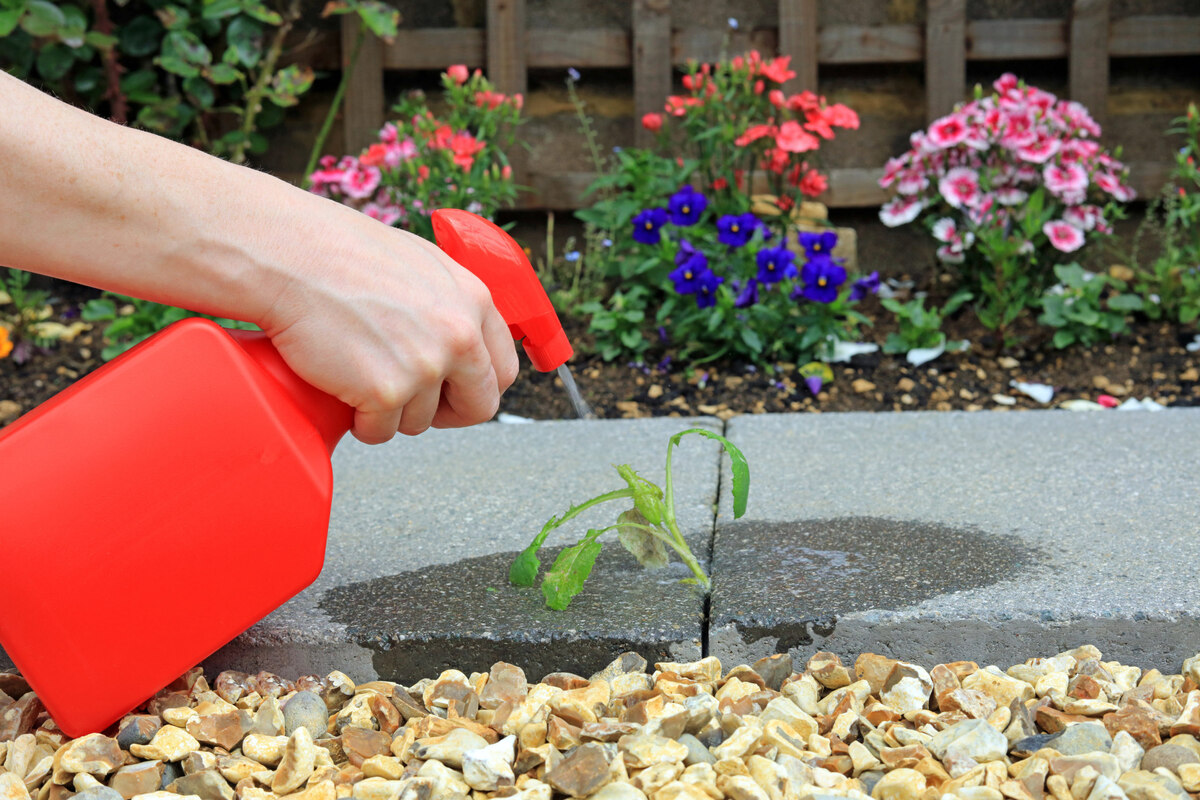

Outdoor Furniture
How To Get Rid Of Weeds On A Patio
Modified: August 25, 2024
Want to keep your outdoor furniture clean and free from weeds? Learn effective methods for getting rid of weeds on your patio and preserving your outdoor furniture's beauty.
(Many of the links in this article redirect to a specific reviewed product. Your purchase of these products through affiliate links helps to generate commission for Storables.com, at no extra cost. Learn more)
Introduction
Welcome to the world of outdoor living! Patios are a fantastic addition to any home, providing a versatile and comfortable space to relax, entertain, and enjoy the great outdoors. As much as we love our patios, they can sometimes become a breeding ground for unwanted guests – weeds. These pesky plants can quickly take over and ruin the aesthetic appeal of your patio, making it essential to take proactive measures to control and eliminate them.
By following the methods and techniques outlined in this article, you can effectively get rid of weeds on your patio and keep it looking clean and beautiful all year round. We will explore both manual and chemical weed control methods, as well as natural alternatives for those looking for eco-friendly solutions. Additionally, we will discuss prevention and maintenance techniques to help keep the weeds at bay in the first place.
Before we dive into the specifics, it’s important to understand why weed control on patios is crucial. Weeds not only detract from the visual appeal of your outdoor space but can also cause damage to the patio surface, compromise its structural integrity, and create tripping hazards. They can also attract pests and insects, making it uncomfortable to spend time in or near your patio.
With that in mind, let’s explore the different steps and methods you can take to combat those unwanted weeds and maintain a clean and weed-free patio.
Key Takeaways:
- Say goodbye to weeds on your patio! Use natural methods like vinegar and boiling water, or opt for chemical herbicides for a weed-free outdoor space.
- Keep your patio pristine with regular cleaning, weed barriers, and polymeric sand. Prevent weed growth and enjoy a beautiful, low-maintenance outdoor area.
Read more: How To Get Rid Of Weeds In A Brick Patio
Importance of Weed Control on Patios
Weed control is an essential aspect of patio maintenance. Keeping your patio free from weeds not only enhances its aesthetic appeal, but it also ensures the longevity and durability of the patio surface. Here are some key reasons why weed control is crucial for your patio:
- Pest Prevention: Weeds can attract pests and insects that can quickly become a nuisance. These pests can not only make spending time on your patio unpleasant but can also pose health risks. By eliminating weeds, you can reduce the likelihood of attracting pests and ensure a comfortable outdoor experience.
- Enhanced Safety: Weeds can create tripping hazards, especially if they start to grow and spread through the cracks and crevices of your patio. Over time, this can cause instability and compromise the safety of your outdoor space. Regularly removing weeds reduces the risk of accidents and injuries caused by uneven surfaces.
- Preserving Patio Structure: Weeds have a way of finding their way into small cracks and crevices in your patio. As they grow, they can exert pressure on the surrounding materials, leading to cracks, gaps, and even structural damage. By controlling and eliminating weeds, you can prevent these issues and prolong the lifespan of your patio.
- Maintaining Aesthetic Appeal: Weeds can quickly mar the beauty of your patio, creating an unkempt and unsightly appearance. Regular weed control ensures that your patio remains visually appealing, allowing you to fully enjoy and appreciate your outdoor space.
- Preventing Weed Spread: Weeds are known for their ability to reproduce and spread rapidly. If left unchecked, they can infiltrate other areas of your garden or landscape, making it even harder to control and eliminate them. By tackling weeds on your patio early on, you can prevent their spread and keep them from taking over your entire outdoor space.
Now that we understand the importance of weed control on patios, let’s explore the various methods and techniques you can employ to effectively get rid of weeds and maintain a pristine patio.
Step 1: Identify the Types of Weeds
Before you can effectively tackle the weeds on your patio, it’s important to identify the types of weeds you’re dealing with. Different weeds have different growth habits and require different methods of removal or control. Here are some common types of weeds that you might encounter on your patio:
- Dandelions: These broadleaf weeds have distinctive yellow flowers that turn into fluffy seed heads. They have deep taproots, making them challenging to remove.
- Crabgrass: Crabgrass is an annual weed that spreads through seed production. It has coarse leaves that form a dense mat, crowding out desirable grass and vegetation.
- Clovers: Common clover is a low-growing perennial weed with three-leaf clusters. It spreads through creeping stems called stolons and can quickly take over bare patches in your lawn or patio.
- Chickweed: Chickweed is a delicate annual weed that grows low to the ground. It has small, star-shaped white flowers and thrives in shady, moist areas.
- Grassy Weeds: This category includes various grassy weeds, such as goosegrass, annual bluegrass, and quackgrass. These weeds resemble desirable grass species but can quickly take over and compete for resources.
By identifying the specific types of weeds on your patio, you can choose the most appropriate methods for removal or control. It’s helpful to look closely at the leaves, flowers, and growth patterns of the weeds to determine their exact species. You can also consult local gardening resources or seek professional advice to get a better understanding of the weeds specific to your region.
Once you have identified the types of weeds, you can proceed to the next step: manual weed removal techniques. We will explore different methods of physically removing weeds from your patio in the most effective way possible.
Step 2: Manual Weed Removal Techniques
When it comes to removing weeds from your patio, sometimes a hands-on approach is the most effective. Manual weed removal techniques allow you to physically eliminate weeds without the use of chemicals or tools. Here are several methods you can employ:
- Pulling out weeds by hand: For smaller weeds with shallow roots, such as dandelions or chickweed, simply grasping the plant near the base and pulling firmly should do the trick. Make sure to remove the entire root to prevent regrowth.
- Using a weed scraper or knife: For stubborn weeds that have taken root in the cracks or crevices of your patio, a weed scraper or knife can be handy. Slide the tool under the weed and pry it out along with its roots. Be careful not to damage the patio surface in the process.
- Digging out deep-rooted weeds: Some weeds, like crabgrass or clover, have deep, extensive root systems that make manual removal challenging. In such cases, using a small garden trowel or hand shovel to dig around the weed’s base and lift it out entirely can be effective.
When manually removing weeds, it’s essential to ensure you’re wearing gloves to protect your hands. Additionally, taking breaks and avoiding overexertion is important, especially if you have a large patio or many weeds to tackle.
Manual weed removal techniques can be time-consuming, especially if you have a significant weed problem. However, they offer the advantage of being environmentally friendly and avoiding the use of chemicals. For larger patios or persistent weed issues, you may consider combining manual removal with other weed control methods, such as chemical or natural alternatives, which we will discuss in the following steps.
Now that you have learned how to manually remove weeds from your patio, let’s move on to explore chemical weed control methods in Step 3.
Step 2: Manual Weed Removal Techniques
Read more: How To Get Rid Of Garden Weeds
– Pulling out weeds by hand
One of the most basic and straightforward methods of manual weed removal is pulling out weeds by hand. This technique works well for smaller weeds with shallow roots, such as dandelions, chickweed, or young grassy weeds. Here’s how to do it:
- Identify the weed: Before getting started, make sure you can positively identify the weed you want to remove. This will help you target the specific weed and avoid accidentally pulling out desirable plants.
- Choose the right time: It’s best to pull out weeds when the soil is moist. This makes it easier to loosen the root system and ensures that you can remove the entire plant, including the roots.
- Gather your tools: All you need for this method is a pair of gardening gloves. The gloves will protect your hands and provide you with a good grip on the weeds.
- Grasp the weed: Position your hand near the base of the weed, close to the ground. Firmly grip the weed, ensuring that you have a hold on the entire plant, including the base.
- Pull gently but firmly: With a steady and even pressure, pull the weed upwards, making sure to keep it as intact as possible. Try to pull slowly and steadily to ensure you remove the entire root system.
- Dispose of the weed: Once you have successfully pulled out the weed, place it in a bag or bucket for disposal. Avoid throwing the pulled weeds back onto the ground, as this could risk reseeding or spreading.
- Inspect the area: Take a moment to inspect the area where you removed the weed. Ensure that there are no remaining pieces of the plant or roots left behind.
It’s important to note that this method works best for small infestations or isolated weeds. If you have a large number of weeds or extensive weed growth on your patio, you may need to employ other manual or chemical weed control methods.
By regularly pulling out weeds by hand, you can keep your patio looking clean and well-maintained. Remember to be consistent with your efforts and monitor the patio for any new weed growth, repeating the process as necessary.
Now that you’ve learned one manual weed removal technique, let’s move on to explore other methods, such as using a weed scraper or knife, in our next section.
Step 2: Manual Weed Removal Techniques
– Using a weed scraper or knife
For stubborn weeds that have taken root in the cracks or hard-to-reach areas of your patio, using a weed scraper or knife can be an effective method of manual weed removal. This technique allows you to target the weed and remove it along with its roots. Here’s how to do it:
- Identify the weed: Before starting, make sure you can correctly identify the weed you want to remove. This will help you avoid accidentally removing desirable plants or damaging the patio surface.
- Choose the right tool: Look for a weed scraper or a thin-bladed knife specifically designed for weed removal. These tools are typically sharp and have a flat edge that can easily slide under the weed and loosen its roots.
- Locate the weed: Identify the location of the weed on your patio. Pay attention to cracks, crevices, or areas where weeds tend to emerge. This will help you target the weed accurately.
- Slide the tool under the weed: Gently insert the weed scraper or knife under the weed, as close to the base as possible. Slide the tool along the ground to separate the weed from its roots.
- Lift the weed: Once the weed is loosened, use the tool to lift it out of the ground. Try to get as much of the root system as possible to avoid regrowth.
- Dispose of the weed: Place the removed weed in a bag or bucket for disposal. Be sure to discard it properly to prevent reseeding or spreading.
- Inspect the area: After removing the weed, inspect the area to ensure there are no remaining pieces or roots left behind. Removing all traces of the weed will prevent regrowth.
Using a weed scraper or knife is particularly effective for weeds that have taken root in narrow cracks or hard-to-reach areas where pulling by hand may be challenging. It allows you to target the weeds specifically and remove them without damaging the surrounding patio surface.
Remember to wear protective gloves when using a weed scraper or knife to prevent any accidental cuts or injuries. Additionally, ensure you exercise caution to avoid damaging the patio surface during the process.
Now that you’re familiar with using a weed scraper or knife, let’s move on to the next method – digging out deep-rooted weeds – in our manual weed removal techniques.
Step 2: Manual Weed Removal Techniques
Read more: How To Get Rid Of Weeds On Grass
– Digging out deep-rooted weeds
For weeds with deep, extensive root systems like crabgrass or clover, manual removal may require a more intensive approach. Digging out these deep-rooted weeds allows you to completely remove them from your patio. Here’s how to do it:
- Identify the weed: Make sure you can accurately identify the weed you want to remove. This will help you avoid removing desirable plants or damaging the patio surface.
- Gather your tools: You’ll need a small garden trowel or hand shovel for this method. These tools will assist in digging around the weed’s base and lifting it out.
- Choose the right time: It’s best to remove deep-rooted weeds when the soil is moist. This makes it easier to dig and ensures you can remove the entire root system.
- Locate the weed: Find the location of the weed on your patio. Note that deep-rooted weeds may have spread their roots under the patio surface, so you may need to dig carefully.
- Start digging: Use the garden trowel or hand shovel to dig into the soil around the weed’s base. Dig deep enough to reach the entirety of the root system.
- Lift out the weed: Once you’ve loosened the soil around the weed, gently lift it out, ensuring you remove the entire root system. Be careful not to damage the patio surface in the process.
- Dispose of the weed: Place the removed weed in a bag or bucket for proper disposal. Avoid throwing it back onto the ground, as this could lead to reseeding or spreading.
- Inspect the area: After removing the weed, inspect the area to ensure there are no remaining pieces or roots left behind. Thoroughly removing all traces of the weed will prevent regrowth.
Digging out deep-rooted weeds may take a bit more time and effort, but it is an effective way to prevent regrowth and get rid of persistent weeds on your patio. It’s important to be patient and thorough during the process to ensure the roots are completely removed.
Remember to wear gloves to protect your hands during the digging process, especially if you encounter thorny or prickly weeds. Take breaks as needed, particularly if you’re working on a larger patio or dealing with numerous deep-rooted weeds.
Now that you’ve learned how to dig out deep-rooted weeds, you’re well-equipped with manual weed removal techniques. In our next step, we’ll explore chemical weed control methods as an alternative for tackling weeds on your patio.
Step 3: Chemical Weed Control Methods
While manual weed removal techniques can be effective, they may not always be sufficient for larger weed infestations or persistent weeds that keep coming back. In such cases, chemical weed control methods can provide an extra layer of defense in eliminating weeds from your patio. It’s important to note that when using chemical methods, it’s crucial to follow the product instructions carefully and take necessary precautions to ensure your safety and that of the environment. Here are two common chemical weed control methods:
- Herbicides for patio weed control: Herbicides are chemical substances specifically designed to kill or inhibit the growth of weeds. They are available in various formulations, such as liquid sprays or granules, and contain specific active ingredients that target weeds while minimizing harm to desirable plants. When using herbicides on your patio, it’s important to choose a product labeled for use on hardscapes and follow the instructions regarding application rates and timing.
- Selective vs. non-selective herbicides: Selective herbicides are designed to target specific types of weeds while leaving desirable plants unharmed. This can be particularly useful if your patio has grass or other desirable vegetation. Non-selective herbicides, on the other hand, kill all plants they come into contact with. These types of herbicides are typically used when there is a widespread weed problem on the patio and when you want to remove all vegetation. However, be cautious when using non-selective herbicides, as they can kill desirable plants as well.
When using chemical weed control methods, always read and follow the instructions provided by the manufacturer. Here are a few additional tips:
- Protect yourself: Wear protective clothing, gloves, and safety glasses to avoid contact with the herbicide, especially when spraying or applying the product.
- Mind the weather conditions: Choose a calm day to apply herbicides, as wind can carry the product to unintended areas and damage desirable plants. Avoid application on rainy or windy days as well, as it may wash away the herbicide or make it less effective.
- Spot treatment: If you have isolated weeds rather than a complete infestation, consider spot treating the affected areas instead of using herbicides across the entire patio. This minimizes the potential impact on desirable plants.
- Proper disposal: Follow local regulations for the proper disposal of herbicides and containers. Do not pour leftover herbicide down drains or into bodies of water.
When used correctly, chemical weed control methods can be an effective way to manage weeds on your patio. However, it’s important to weigh the benefits against any potential risks and consider using eco-friendly or natural alternatives if you have concerns about the impact of chemicals on the environment or the health of your family and pets.
Now that you’ve learned about chemical weed control methods, let’s move on to explore natural weed control methods as an alternative in Step 4.
Step 3: Chemical Weed Control Methods
– Herbicides for patio weed control
Herbicides are chemical substances designed to kill or inhibit the growth of weeds. They can be an effective option for controlling weeds on your patio. When using herbicides, it’s important to choose products specifically labeled for use on hardscapes and follow the instructions provided by the manufacturer. Here’s a closer look at using herbicides for patio weed control:
- Selecting the right herbicide: There are various herbicides available on the market, each with specific formulas and active ingredients that target different types of weeds. When purchasing a herbicide, consider the types of weeds you’re dealing with on your patio. Look for products that are effective against the specific weed species you want to control.
- Preparation and application: Before applying herbicides, carefully read and follow the instructions on the product label. This will include information on how to prepare the solution, the recommended application rates, and any safety precautions to be taken. Apply the herbicide directly to the weeds, ensuring thorough coverage.
- Mind the timing and weather: The effectiveness of herbicides can vary depending on the time of year and weather conditions. Some herbicides work best when applied during the active growth stage of the weeds, while others are more effective when weeds are still young. Additionally, avoid applying herbicides on windy or rainy days, as it can lead to the product being distributed to unintended areas or washed away.
- Protection and safety: When using herbicides, it’s important to protect yourself and the surrounding environment. Wear appropriate protective clothing, gloves, and safety glasses to minimize exposure. Keep pets and children away from the treated areas until the herbicide has dried or as directed by the product label.
- Post-application care: After applying herbicides, allow sufficient time for the product to work. Avoid watering or disturbing the treated area until the herbicide has had a chance to take effect. Remember that some herbicides may require multiple applications for effective control, so be patient and follow the instructions regarding reapplication.
Using herbicides can be an efficient way to control weeds on your patio, especially for larger or persistent weed problems. However, it’s essential to weigh the benefits against any potential risks and use herbicides responsibly. If you have concerns about the impact of chemicals on the environment or prefer to use more natural methods, you may consider exploring the natural weed control methods we’ll discuss in the next step.
Now that you’ve learned about using herbicides for patio weed control, let’s move on to explore natural weed control methods in Step 4.
Step 3: Chemical Weed Control Methods
– Selective vs. non-selective herbicides
When it comes to using herbicides for patio weed control, it’s important to understand the distinction between selective and non-selective herbicides. Both types can be effective in controlling weeds, but they differ in their targeting capabilities. Here’s a closer look at selective and non-selective herbicides:
- Selective herbicides: Selective herbicides are designed to target specific types of weeds while leaving desirable plants unharmed. They work by selectively targeting certain biochemical processes unique to the weeds, minimizing the risk of damaging other plants. These types of herbicides are particularly useful if your patio has grass or other desirable vegetation that you want to preserve.
- Non-selective herbicides: Non-selective herbicides, on the other hand, are not specific to particular weed types and will kill any plant they come into contact with. They are designed to kill all vegetation, including both weeds and desired plants. Because of this, non-selective herbicides are typically used when there is a widespread weed problem on the patio and when you want to remove all vegetation in a specific area.
When choosing between selective and non-selective herbicides, consider your specific needs and the type of weeds you are dealing with. If you have a mix of undesirable weeds and desirable plants on your patio, a selective herbicide can help target the specific weeds while sparing the rest of your vegetation. However, if your patio is overrun with weeds and you want a complete reset, a non-selective herbicide may be necessary to clear the entire area.
Remember to always read and follow the instructions provided by the manufacturer when using herbicides. This includes information on proper application rates, timing, and safety precautions. Follow the recommended guidelines to ensure effective weed control while minimizing any potential risks.
While chemical herbicides can be effective, it’s important to consider the potential environmental impact and the safety of humans and animals. If you prefer to use more natural methods or have concerns about using chemicals on your patio, we’ll explore natural weed control methods in the next step.
Now that you’re familiar with selective and non-selective herbicides, let’s move on and discover natural weed control methods in Step 4.
Step 4: Natural Weed Control Methods
For those who prefer eco-friendly alternatives or want to minimize the use of chemicals, natural weed control methods can be an effective and safe option for eliminating weeds on your patio. These methods rely on natural ingredients and techniques to suppress weed growth and inhibit their spread. Here are a few natural weed control methods you can try:
- Vinegar as a natural weed killer: White vinegar is a popular natural alternative for weed control. Its acidity can effectively kill weeds when applied directly to the leaves and stems. Mix vinegar with water in a spray bottle and apply it to the weeds, making sure to avoid desirable plants as the vinegar can damage or kill them as well. Vinegar works best on young and small weeds.
- Boiling water treatment: Boiling water can be a simple yet effective method to kill weeds. Pouring hot water directly onto the weeds will scald their leaves and roots, causing them to wither and die. Be cautious when using boiling water, as it can also harm nearby desirable plants. This method is particularly useful for weeds growing in cracks on your patio.
- Organic weed sprays and homemade solutions: There are organic weed control sprays available that use natural ingredients like citrus oil, clove oil, or corn gluten meal. These sprays work by suppressing weed growth and inhibiting seed germination. Alternatively, you can create homemade weed-killing solutions using household ingredients like salt, dish soap, or essential oils. However, be cautious when using these solutions, as they can harm desirable plants if not applied carefully.
Keep in mind that natural weed control methods may not provide immediate results and might require multiple applications. They are most effective on young or small weeds and may not work as well on more persistent or deeply rooted plants. Regularity and consistency are key to achieve the desired weed control results.
It’s important to note that while natural methods are generally safer for the environment and your health, some caution is still necessary. Avoid applying natural weed control solutions on windy days to prevent drift onto desirable plants, and take care not to oversaturate the soil when using boiling water.
In addition to these natural methods, maintaining a healthy and well-maintained patio through regular sweeping, cleaning, and removing debris can help prevent weed growth. We will discuss further prevention and maintenance techniques in Step 5.
Now that you’ve learned about natural weed control methods, let’s move on and explore prevention and maintenance techniques in Step 5.
Step 4: Natural Weed Control Methods
Read more: How To Grow Grass And Get Rid Of Weeds
– Vinegar as a natural weed killer
Vinegar is a commonly used household ingredient that can be an effective natural weed killer. Its acetic acid content can damage and kill weeds when applied directly. Here’s how to use vinegar as a natural weed control method:
- Choose the right vinegar: Use white vinegar with a higher concentration of acetic acid, typically ranging from 5% to 20%. The higher the concentration, the more effective it will be in killing weeds.
- Mix vinegar with water: Dilute the vinegar with water in a spray bottle, using a ratio of approximately 1 part vinegar to 1 part water. If the weed infestation is severe, you can use undiluted vinegar. Adding a teaspoon of dish soap to the mixture can help the solution adhere to the weeds better.
- Target the weeds: Use the spray bottle to apply the vinegar solution directly to the leaves and stems of the weeds. Be careful not to spray desirable plants, as the vinegar can damage or kill them as well.
- Repeat as necessary: Vinegar may not kill the weeds immediately, and multiple applications may be required for effective control. Monitor the treated area and reapply the vinegar solution as necessary.
- Take precautions: While vinegar is non-toxic to humans and pets, it can cause skin and eye irritation. Wear gloves and protective eyewear when handling and applying the vinegar solution. Avoid contact with skin or eyes, and rinse thoroughly if accidental contact occurs.
- Beware of reseeding: Vinegar does not have any residual effect on the soil, so it won’t prevent new weed seeds from sprouting. To minimize reseeding, consider applying a layer of mulch or a weed barrier after using vinegar as a weed killer. This will help suppress weed growth in the treated area.
Vinegar is most effective on young and small weed plants, as mature and deep-rooted weeds may be more resilient. Keep in mind that vinegar is a non-selective herbicide, meaning it can harm any plant it comes into contact with, so use it with caution and target only the weeds you want to eliminate.
While vinegar is a natural and easily accessible weed killer, it may not provide immediate results and may require multiple applications. Regularly monitoring and treating new weed growth will help maintain a weed-free patio over time.
Now that you’ve learned about using vinegar as a natural weed killer, let’s move on and explore other natural weed control methods in Step 4.
Step 4: Natural Weed Control Methods
– Boiling water treatment
Another natural and effective method for weed control on your patio is the use of boiling water. Boiling water treatment is a simple and environmentally friendly way to kill weeds by scalding their leaves and roots. Here’s how to use boiling water as a natural weed control method:
- Boil water: Heat a pot or kettle of water until it reaches a rolling boil. The amount of water you need will depend on the size of the area you want to treat and the number of weeds you’re targeting.
- Identify the weeds: Locate the weeds you want to eliminate on your patio. Boiling water treatment works best for weeds growing in cracks, between pavers, or in other confined areas.
- Pouring the boiling water: Carefully pour the boiling water directly onto the leaves and stems of the weeds, making sure to saturate the plants thoroughly. Take caution not to splash the boiling water onto yourself or nearby desirable plants.
- Repeat as needed: Some weeds may require multiple treatments to fully eliminate them. Monitor the treated area and reapply boiling water as necessary to ensure effective weed control.
- Post-treatment precautions: Avoid watering or disturbing the treated area for a few days after applying boiling water. This will allow the heat to penetrate the soil and prevent seeds or root fragments from regrowing.
- Protective measures: When handling boiling water, take appropriate safety precautions. Use heat-resistant gloves and clothing to protect yourself from accidental burns. Pour the boiling water slowly and carefully to avoid splashing or spilling.
Boiling water treatment is most effective for young and small weeds, as larger or deep-rooted weeds may require additional methods for complete eradication. This natural weed control method is ideal for spot treatments and can be particularly useful for weeds growing in confined areas on your patio.
It’s important to note that boiling water treatment, while effective, can also affect nearby desirable plants. Take care to target the weeds specifically and avoid pouring boiling water onto plants you want to keep.
Now that you’ve learned about using boiling water as a natural weed control method, let’s move on and explore other natural weed control methods in Step 4.
Step 4: Natural Weed Control Methods
Read more: How To Get Rid Of Weeds In Brick Walkway
– Organic weed sprays and homemade solutions
If you prefer a natural approach to weed control on your patio, organic weed sprays and homemade solutions can be effective alternatives to chemical herbicides. These options utilize natural ingredients that can help suppress weed growth and inhibit seed germination without harming the environment. Here are a few examples of organic weed control methods:
- Citrus oil-based sprays: Citrus oil, derived from the peel of citrus fruits, contains natural compounds that can be effective in killing weeds. Mix a few drops of citrus oil with water in a spray bottle and apply it directly to the weeds. The oil’s active ingredients can penetrate the leaves and disturb the weed’s cellular structure, causing them to wither and die.
- Clove oil-based sprays: Clove oil has herbicidal properties that can be used as a natural weed killer. Mix a few drops of clove oil with water and dish soap in a spray bottle. The soap helps the solution adhere to the weed’s leaves for better absorption. Spray the mixture directly onto the weeds, targeting their leaves and stems.
- Corn gluten meal as a natural pre-emergent: Corn gluten meal acts as a natural pre-emergent herbicide, inhibiting the germination of weed seeds. Apply corn gluten meal to your patio according to the package instructions, typically in early spring or fall before weed seeds have a chance to germinate. This natural alternative helps prevent weed growth without harming existing plants.
- Homemade weed-killing solutions: You can create homemade weed-killing solutions with common household ingredients. For instance, mixing salt with water and dish soap can be an effective weed killer, as salt dehydrates plants when applied directly. However, be cautious when using salt, as it may also harm desirable plants and make the soil unsuitable for future vegetation.
When using organic weed sprays or homemade solutions, it’s essential to target the weeds directly to avoid damaging desirable plants. Be sure to follow the instructions for each specific method and take necessary precautions to protect yourself and the surrounding environment.
While natural weed control methods can be effective, they may require repeated applications and ongoing monitoring to maintain a weed-free patio. Regularly inspect and treat new weed growth to prevent them from becoming established.
In addition to natural weed control methods, maintaining good patio hygiene and taking preventive measures can help reduce weed growth. We will discuss these prevention and maintenance techniques in Step 5.
Now that you’ve learned about organic weed sprays and homemade solutions, let’s move on and explore prevention and maintenance techniques in Step 5.
Step 5: Prevention and Maintenance Techniques
Prevention and maintenance are key aspects of keeping your patio free from weeds and ensuring its long-term beauty and functionality. By implementing these techniques, you can minimize weed growth and reduce the need for constant weed control. Here are some preventive measures and maintenance techniques to consider:
- Regular sweeping and cleaning: Regularly sweep and clean your patio to remove debris, fallen leaves, and plant materials. These can provide a fertile environment for weed seeds to germinate and take root. By keeping your patio clean, you reduce the chances of weeds finding a place to grow.
- Applying a weed barrier or landscape fabric: Consider installing a weed barrier or landscape fabric beneath the surface of your patio. These materials create a physical barrier that prevents weed growth by blocking sunlight and stifling root development. Ensure the barrier is properly installed and covers the entire patio area to be effective.
- Using polymeric sand or jointing compound: For paved or interlocking patios, using polymeric sand or jointing compound between the pavers can inhibit weed growth. These materials harden when exposed to water, creating a solid barrier that makes it difficult for weeds to establish between the joints.
- Promptly removing weeds: Regularly inspect your patio for any emerging weeds or seedlings. As soon as you spot them, remove them promptly. By addressing new weed growth early on, you prevent them from spreading and becoming more difficult to control.
- Maintaining good drainage: Ensure that your patio has proper drainage to prevent excess moisture buildup. Weeds thrive in wet conditions, so maintaining good drainage helps keep the patio drier and less hospitable for weed growth.
- Nurturing a healthy lawn and landscape: If your patio is surrounded by a lawn or landscape, maintain it in good health. A healthy turf and landscape can provide competition to weeds, making it more challenging for them to establish and spread onto your patio.
By combining these preventive measures and maintenance techniques, you can significantly reduce the occurrence of weed growth on your patio. Regularly inspect and address any potential weed issues, and stay proactive in keeping your patio clean and well-maintained.
Remember, though prevention and maintenance are important, it’s still necessary to exercise weed control methods as needed. Integrated weed management, combining preventive measures with manual, chemical, or natural weed control techniques when necessary, will help ensure a beautiful and weed-free patio environment.
Now that you’ve learned about prevention and maintenance techniques, you have the knowledge to keep your patio looking pristine. Implement these strategies to maintain a weed-free outdoor space for years to come.
Step 5: Prevention and Maintenance Techniques
– Regular sweeping and cleaning
Regular sweeping and cleaning of your patio is an essential maintenance task that can significantly reduce the occurrence of weeds. By keeping your patio clean and free from debris, fallen leaves, and plant materials, you create a less hospitable environment for weed growth. Here are some tips for effective sweeping and cleaning:
- Create a maintenance routine: Establish a regular schedule for sweeping and cleaning your patio. Depending on the level of foot traffic, weather conditions, and surrounding foliage, you may need to sweep and clean weekly, bi-weekly, or monthly.
- Invest in the right tools: Use a broom with stiff bristles or a push broom specifically designed for outdoor use. These types of brooms are effective at sweeping away debris and dislodging any settled material between cracks and crevices.
- Remove fallen leaves and plant material: Fallen leaves and plant debris can easily accumulate on your patio, providing a breeding ground for weed seeds to germinate. Regularly remove this organic matter to prevent weed growth. Use a rake or leaf blower to gather and dispose of leaves properly.
- Pay attention to cracks and crevices: Weeds often find their way into cracks and crevices on your patio. Use a stiff brush or a narrow tool to dislodge any dirt, moss, or weeds that have taken root in these areas. Removing these materials will help prevent weed establishment and growth.
- Consider power washing: Power washing your patio occasionally can be an effective way to remove embedded dirt and grime. This helps prevent the buildup of organic matter, which can serve as a medium for weed growth. Use a suitable pressure setting and ensure you maintain a safe distance from the patio surface to avoid causing damage.
- Dispose of debris properly: When cleaning your patio, gather all debris and dispose of it in a compost bin, yard waste container, or according to local regulations. Avoid leaving the debris near your patio or placing it in areas where weed seeds can spread.
Regular sweeping and cleaning not only deter weed growth but also help maintain a clean and visually appealing patio. By incorporating this maintenance routine into your patio care, you can reduce the amount of time and effort spent on weed control in the long run.
Now that you have learned the importance of regular sweeping and cleaning, implement this practice as part of your overall patio maintenance routine. Combined with other preventive measures, this will help keep weeds at bay and ensure your patio remains a beautiful and weed-free outdoor space.
Step 5: Prevention and Maintenance Techniques
– Applying a weed barrier or landscape fabric
Applying a weed barrier or landscape fabric is a preventive measure that can help minimize weed growth on your patio. These materials create a physical barrier that inhibits weed seeds from germinating and taking root in the soil. Here’s how to effectively apply a weed barrier or landscape fabric:
- Select the appropriate barrier or fabric: There are various types of weed barriers and landscape fabrics available, so choose one that suits your needs. Look for materials that are durable, permeable to water and air, and suitable for your specific patio surface.
- Prepare the patio surface: Clear the area of any debris, weeds, or existing vegetation. Use a broom or brush to sweep away loose dirt and ensure the surface is clean and smooth before installing the weed barrier or landscape fabric.
- Measure and cut the material: Measure the patio area that needs coverage and cut the weed barrier or fabric to the appropriate size using scissors or utility knife. Leave a bit of excess material around the edges to secure it in place.
- Secure the barrier or fabric: Lay the weed barrier or landscape fabric evenly over the patio surface. Use heavy-duty landscape staples or anchor pins to secure the material to the ground. Space the staples or pins a few feet apart along the edges and throughout the interior to prevent shifting or movement.
- Overlap and secure seams: If using multiple pieces of the barrier or fabric, ensure they overlap by several inches to prevent weed growth between the seams. Secure the overlapping sections with landscape staples or pins to maintain a continuous barrier.
- Trim and cover the edges: Trim any excess material from the edges using scissors or a utility knife. To protect the edges from exposure and potential weed intrusion, place landscape edging or decorative stones along the perimeter of the patio.
- Make necessary openings: If you have existing plants or shrubs on your patio, cut small openings in the barrier or fabric to accommodate them. Ensure the openings are snug around the plant stems to prevent weed growth around the base.
- Maintain and monitor: Regularly inspect the weed barrier or landscape fabric for any signs of damage or weed breakthrough. Repair or replace damaged sections promptly to maintain the effectiveness of the barrier and prevent weed intrusion.
Applying a weed barrier or landscape fabric is an effective method to suppress weed growth on your patio. It helps block sunlight and prevents weed seeds from establishing themselves in the soil. However, it’s important to note that these materials are not foolproof and may require periodic maintenance and monitoring to ensure their ongoing efficacy.
Now that you’ve learned about applying a weed barrier or landscape fabric, consider incorporating this preventive measure into your patio maintenance routine. Coupled with other techniques, it will significantly reduce weed growth and help keep your patio weed-free and beautiful.
Step 5: Prevention and Maintenance Techniques
– Using polymeric sand or jointing compound
To further prevent weed growth and maintain a weed-free patio, the use of polymeric sand or jointing compound between the pavers or joints can be highly effective. These materials create a solid barrier that inhibits weed germination and makes it difficult for weeds to establish and grow. Here’s how to use polymeric sand or jointing compound:
- Gather the necessary materials: Purchase polymeric sand or jointing compound suitable for your patio surface. Choose a color that matches or complements your pavers.
- Prep the patio: Ensure the patio and joints are clean and free from debris. Sweep away any loose dirt or sand that may interfere with the proper application of polymeric sand or jointing compound.
- Apply the material: Pour the polymeric sand or jointing compound into the joints between the pavers. Use a broom or brush to sweep and pack the material into the gaps, ensuring it fills the joints completely. Keep it level with the top of the pavers.
- Compact the material: Use a compactor or tamper to lightly tamp down the polymeric sand or jointing compound. This process helps in further settling and securing the material in place.
- Remove excess material: With a broom or brush, sweep away any excess polymeric sand or jointing compound from the surface of the patio. Ensure you remove it carefully to prevent scratching or displacing the material from the joints.
- Activate and cure the material: Refer to the manufacturer’s instructions for activating the polymeric sand or jointing compound. Typically, this involves lightly misting the surface with water to initiate the hardening process. Allow the material to cure for the recommended time before using the patio.
- Maintain and monitor: Regularly inspect the joints for any signs of weed growth or gaps. If necessary, add additional polymeric sand or jointing compound to fill in any areas that have settled or deteriorated over time.
Using polymeric sand or jointing compound fills the gaps between pavers, creating a solid barrier that discourages weeds from taking root and growing. The hardened material also helps prevent erosion and keeps the pavers securely in place.
It’s important to note that while polymeric sand or jointing compound is effective in minimizing weed growth, it may still be possible for some weed seeds to germinate on the surface of the pavers. Regular maintenance and spot treatment may be necessary to address any weed breakthrough that occurs.
Now that you’ve learned about using polymeric sand or jointing compound, consider incorporating this technique into your patio maintenance routine. Alongside other preventive measures, it will help keep your patio weed-free and greatly enhance its appearance and longevity.
Read more: How To Get Rid Of Weed Smell In Closet
Conclusion
Congratulations! You are now equipped with a range of valuable techniques and methods to effectively control and eliminate weeds on your patio. By following the steps outlined in this guide, you can maintain a clean, beautiful, and weed-free outdoor space for your enjoyment.
We started by emphasizing the importance of weed control on patios, highlighting the negative impact weeds can have on the aesthetics, safety, and structure of your patio. We then delved into the steps of identifying the types of weeds present, manual weed removal techniques like pulling by hand, using a weed scraper or knife, and digging out deep-rooted weeds.
For those who prefer chemical weed control methods, we explored using herbicides, including selective and non-selective options. We also delved into natural weed control methods, such as vinegar as a natural weed killer, using boiling water treatment, and organic weed sprays or homemade solutions.
Furthermore, we discussed the importance of prevention and maintenance techniques. Regular sweeping and cleaning, applying weed barriers or landscape fabric, and using polymeric sand or jointing compound can all play critical roles in keeping weeds at bay and maintaining a weed-free patio environment.
Remember to consider the specific conditions of your patio, the types of weeds you are dealing with, and your personal preferences when choosing the best methods for weed control. Integrated weed management, combining a mix of manual, chemical, and natural techniques, is often the most effective approach to keep your patio free from weeds.
By implementing these strategies and techniques, you can enjoy a clean, inviting outdoor space that enhances the beauty of your patio and surrounding areas. Regular maintenance, attentive observation, and proactive weed control efforts will go a long way in ensuring a weed-free environment for years to come.
Now, go forth and reclaim your patio from those pesky weeds. Enjoy the beauty of your outdoor space with confidence, knowing that you have the knowledge and tools to keep weeds under control. Happy patio living!
Frequently Asked Questions about How To Get Rid Of Weeds On A Patio
Was this page helpful?
At Storables.com, we guarantee accurate and reliable information. Our content, validated by Expert Board Contributors, is crafted following stringent Editorial Policies. We're committed to providing you with well-researched, expert-backed insights for all your informational needs.
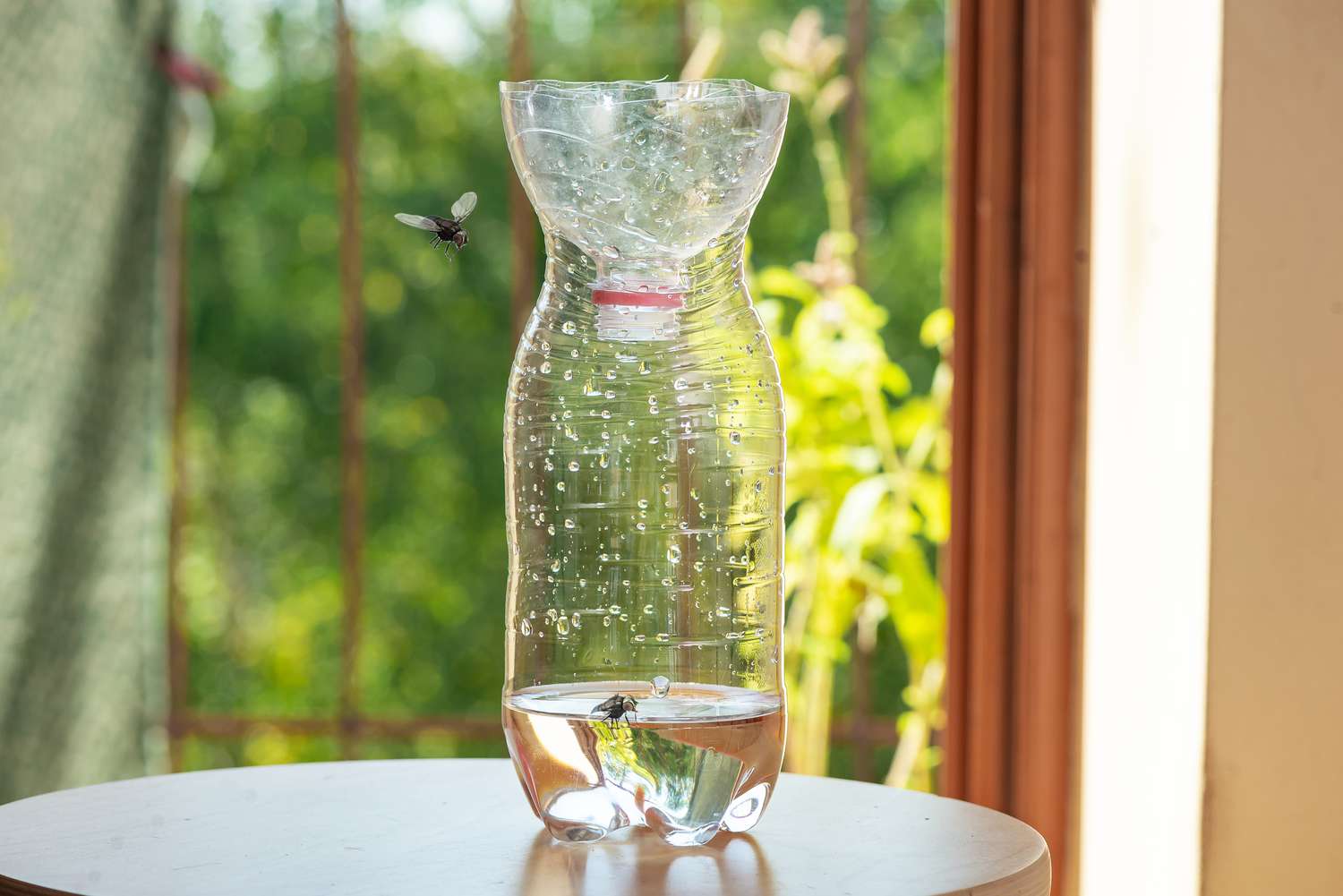

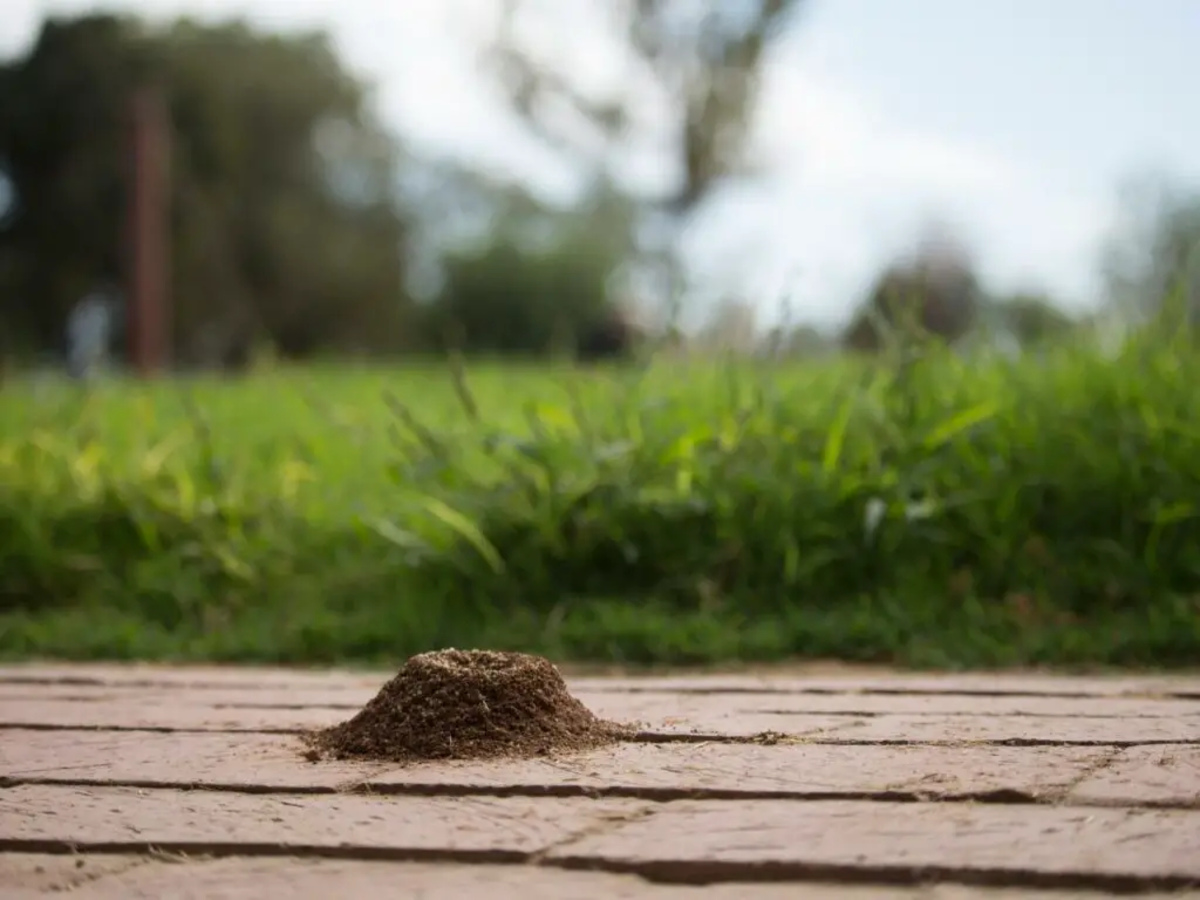
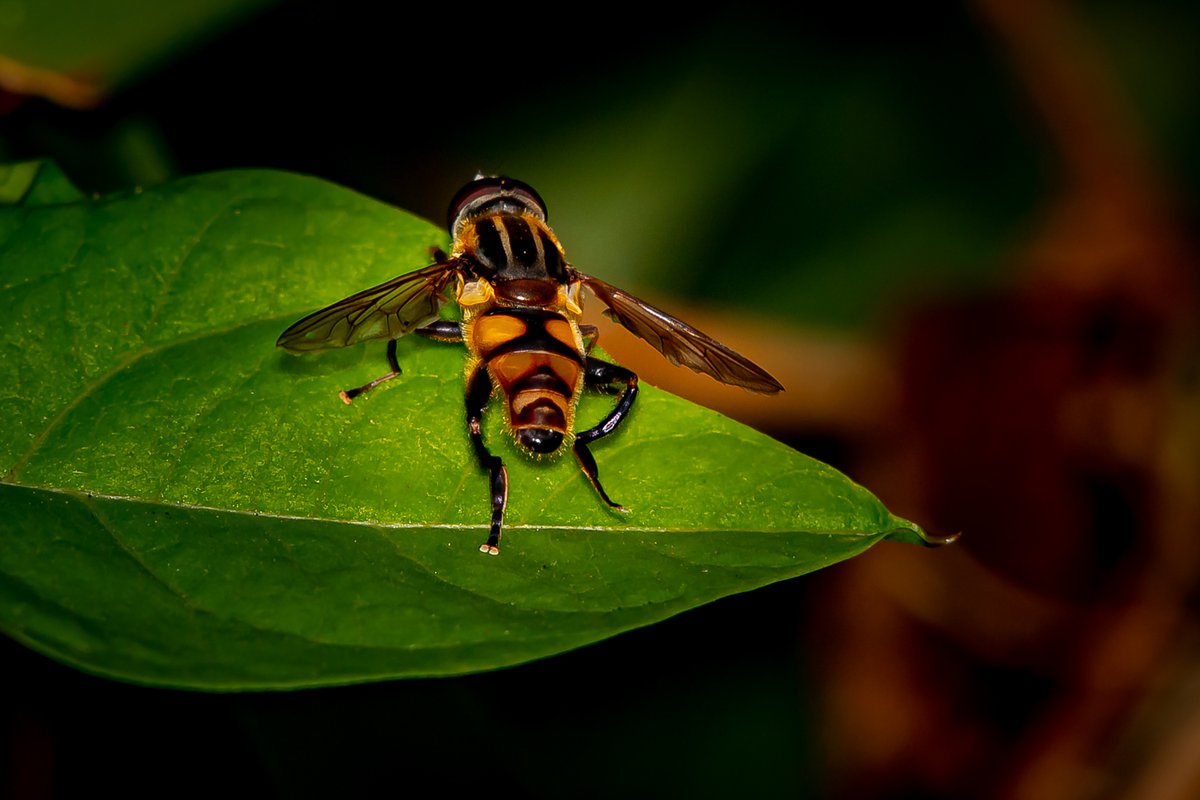
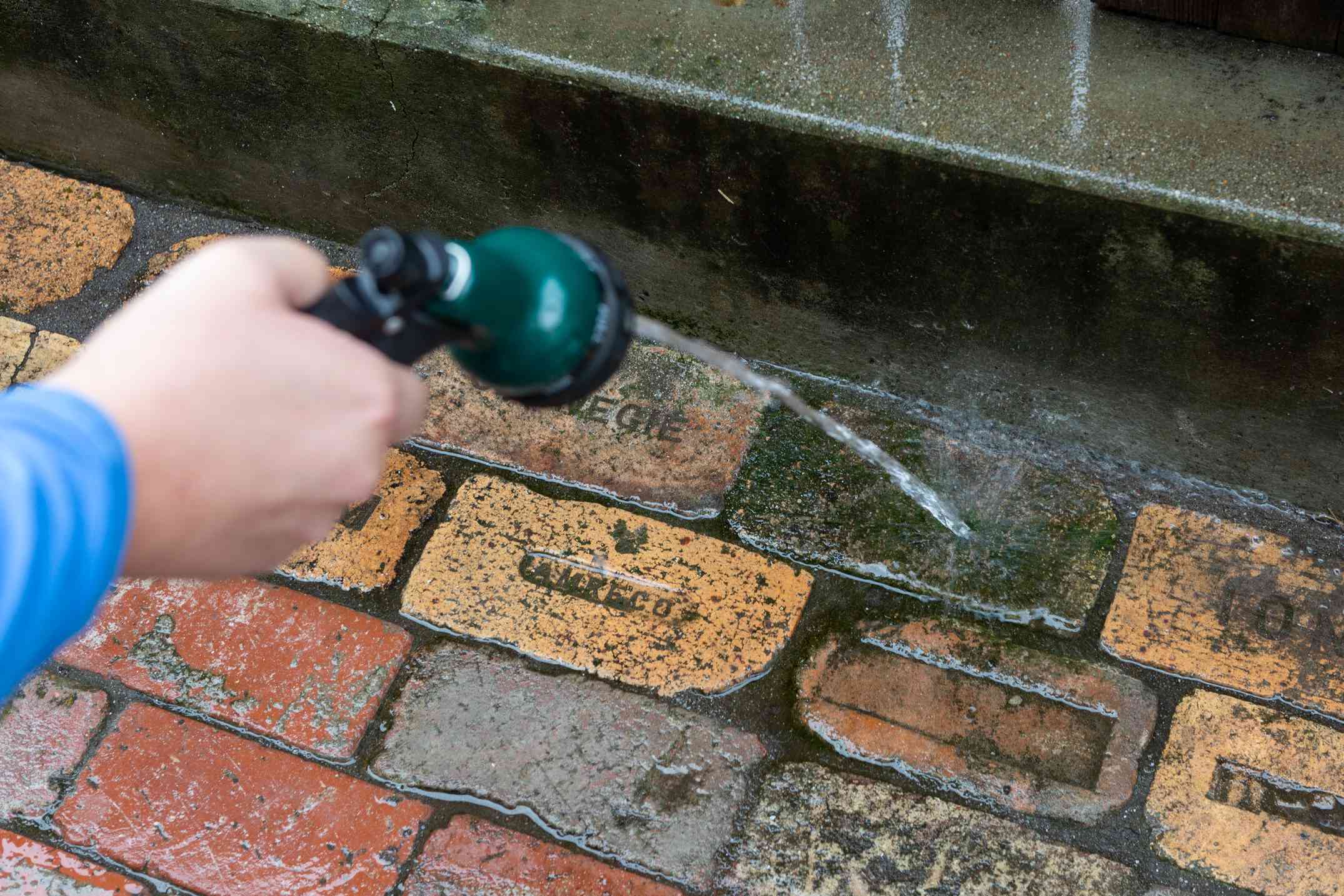
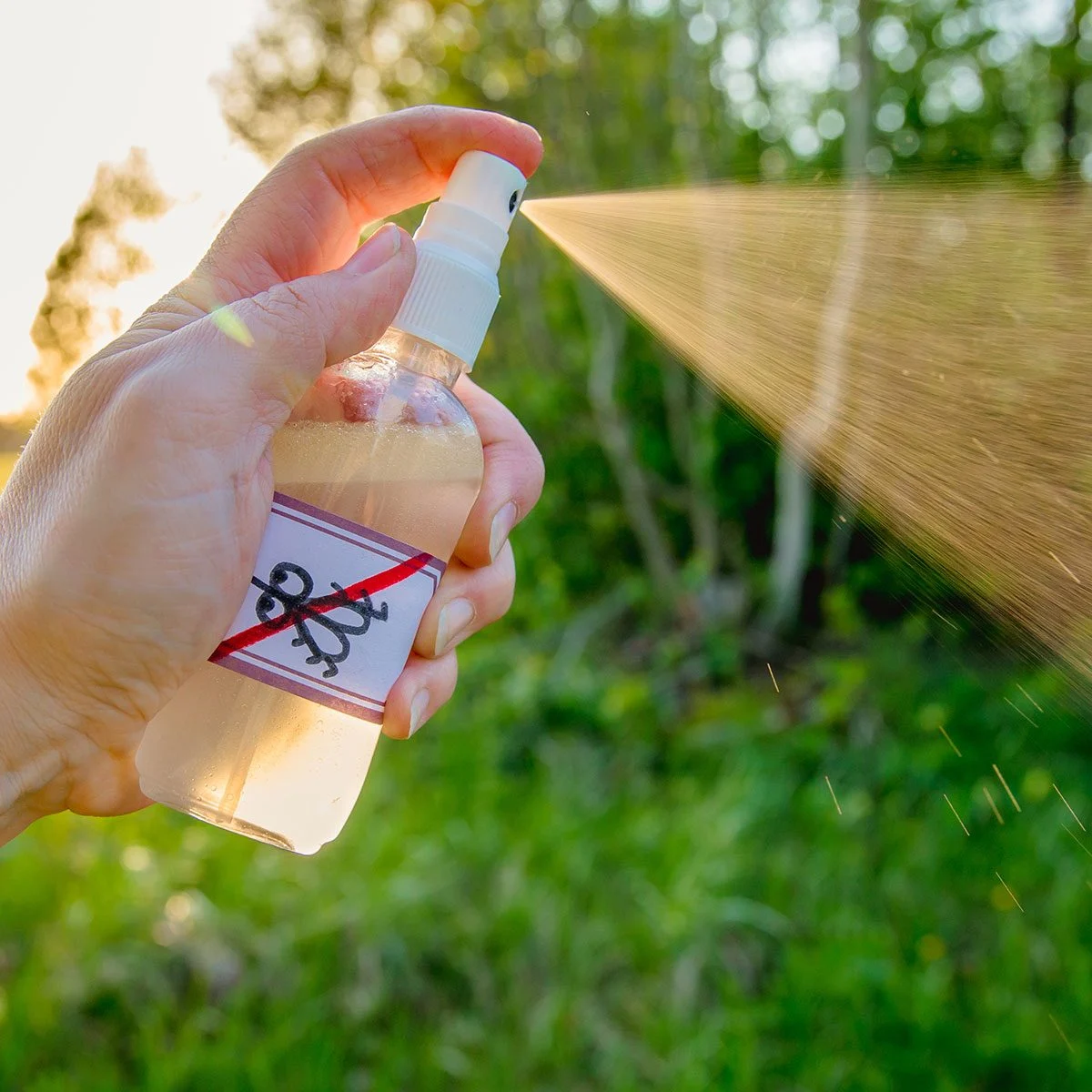

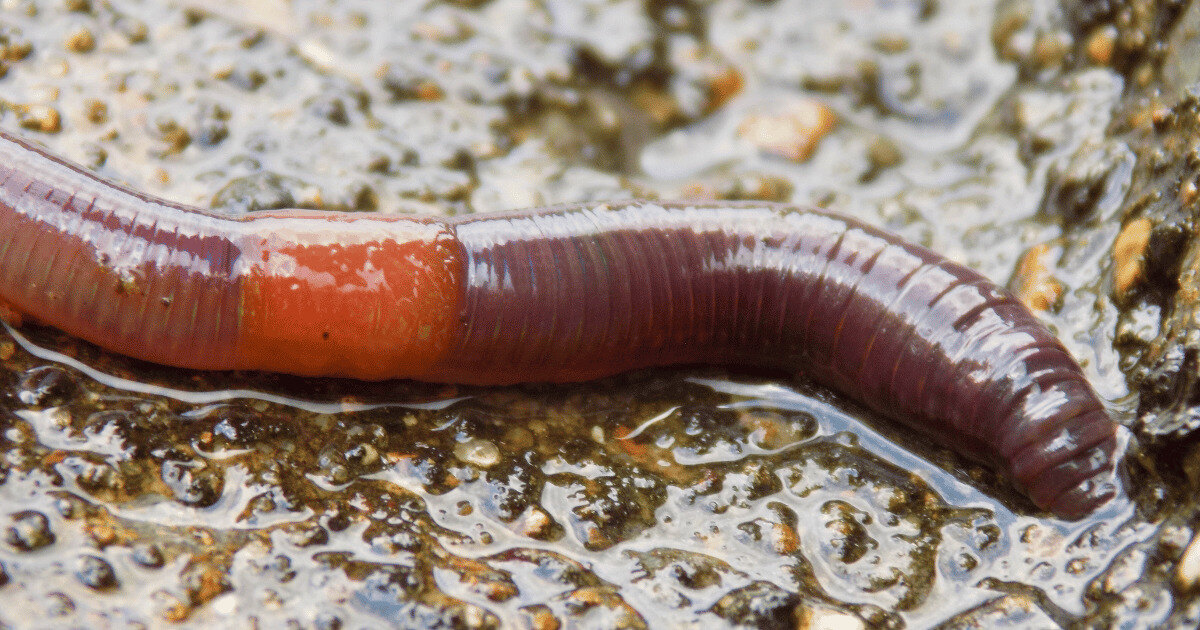

0 thoughts on “How To Get Rid Of Weeds On A Patio”